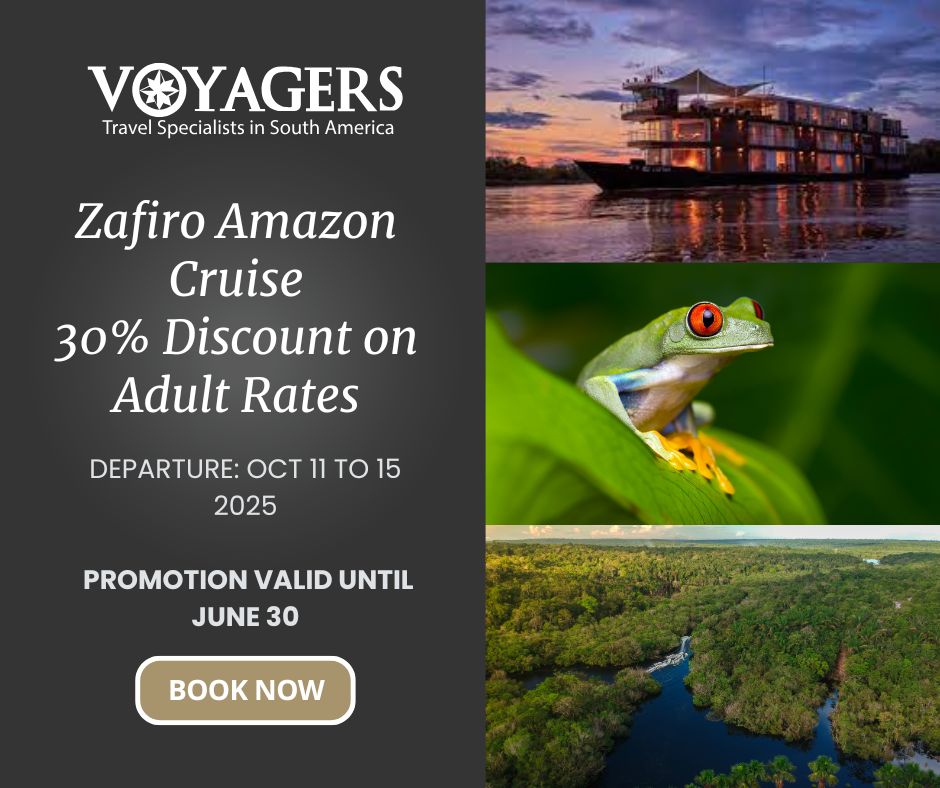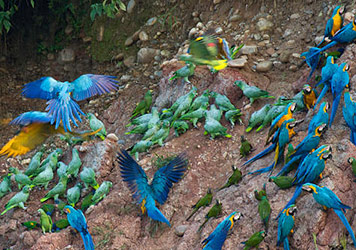The Tambopata Research Center (TRC) is one of the most remote rainforest lodges in Peru, offering adventurous travelers an outstanding chance to engage with the natural wonders of the Amazon.
Quick facts about our lodge:
- One wing of 18 rooms connected by raised boardwalk
- 8 shared bathrooms
- Research quarters
- Dining room
- The dining room is an open building that doubles as a bar
- The research quarters is a two story building usually full of scientists and their assistants from the macaw project.
- Room Amenities
Our rooms are unique due to the fact that one side of the room open out onto the surrounding rainforest acting as a window into the forest allowing guests to enjoy this unique ecosystem even from the comfort of their hammocks and enabling you to view animals, including monkeys, often visible from the lodge. The reason we have been able to incorporate this “luxurious” design into our lodge is because mosquitoes are not really a problem around the lodge clearing and the open section allows for an intimate contact with the rain forest.
Other room amenities include:
- Natural Construction – A simple, airy lodge built from traditional materials such as wood, palm fronds and clay.
- Rooms – Eighteen bedrooms, eight shared bathrooms and a common area including for dining.
- Electricity – No mains electricity. Lighting is by candle and kerosene lamp.
- Generators – Guests can recharge camera batteries, cellphones and other devices using our generator.
- Water – No hot water (its not as bad as you think)
- Internet – Guests have access to wireless internet connections throughout the lodge. We also have radios and satellite telephones in case of emergencies.
- Private Rooms- Bedrooms are separated from one another by light cane fencing, with drapes instead of doors. Rooms are private but not soundproof.
- Mosquito Nets – All have mosquito nets and hammocks, bedside tables and a rack of clothes hangers.
- Jungle Views – Bedrooms open out onto the surrounding rainforest, allowing guests to enjoy this unique ecosystem even on their downtime, with wild animals, including monkeys, often visible from the lodge.


















